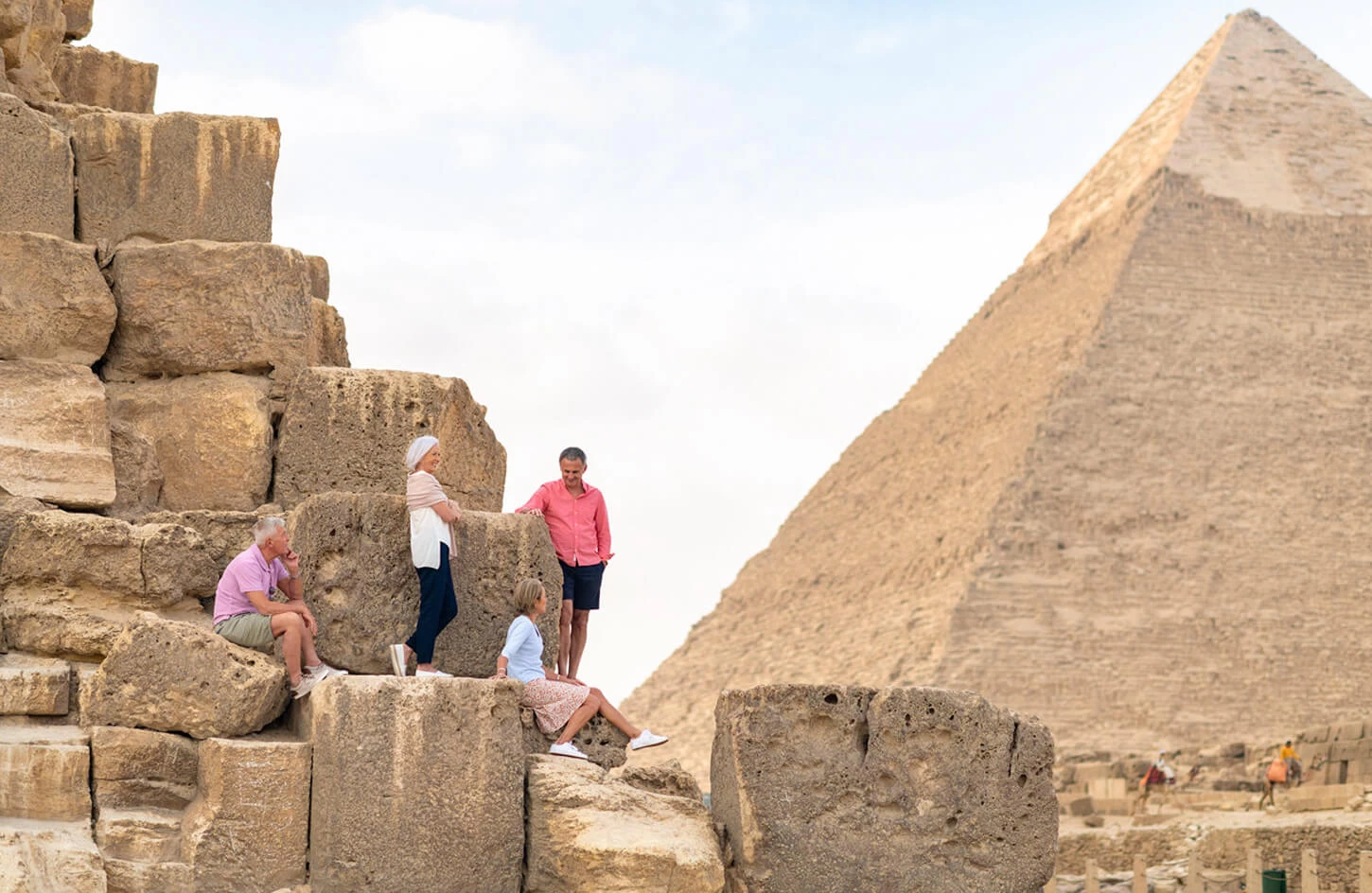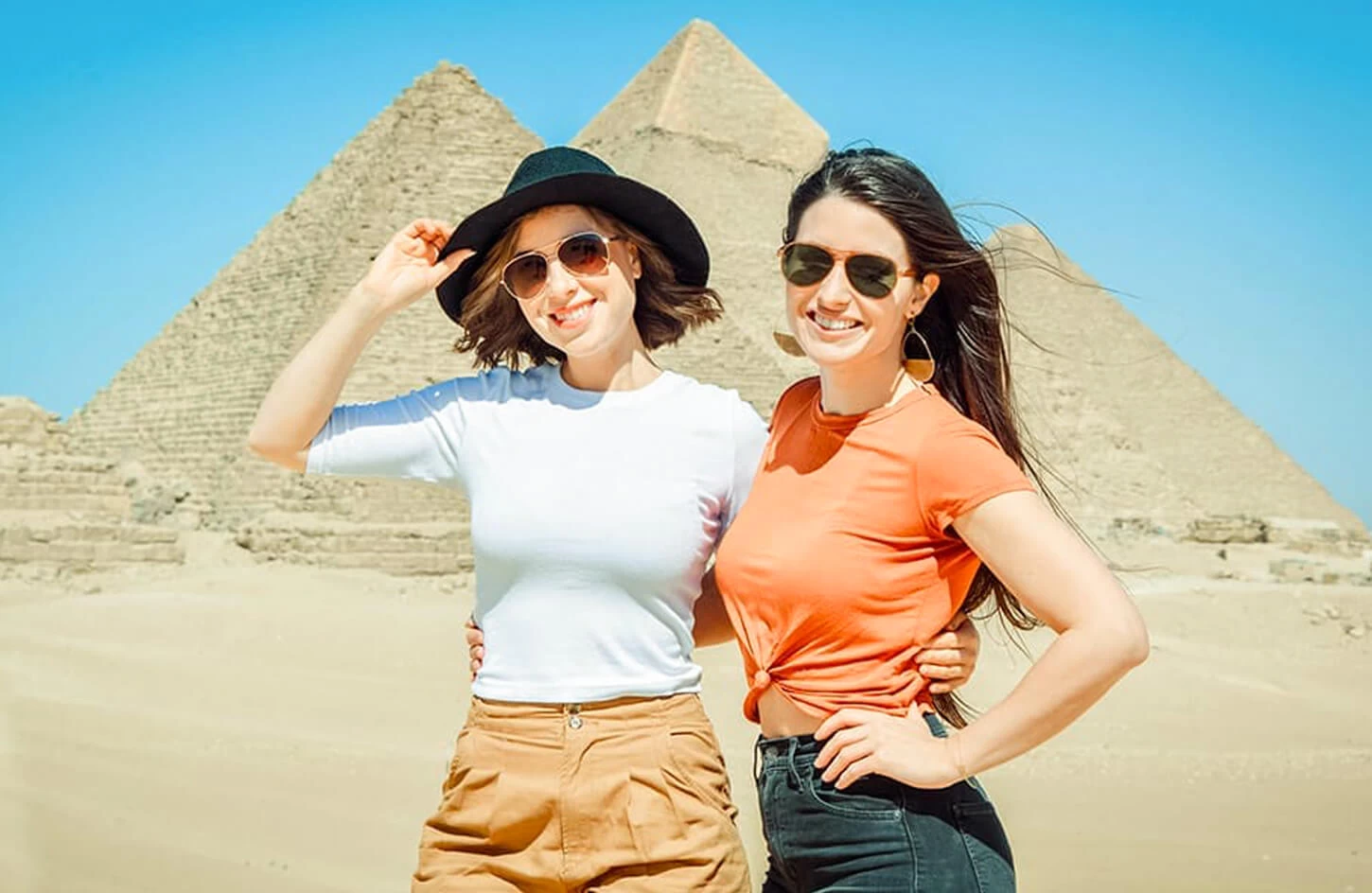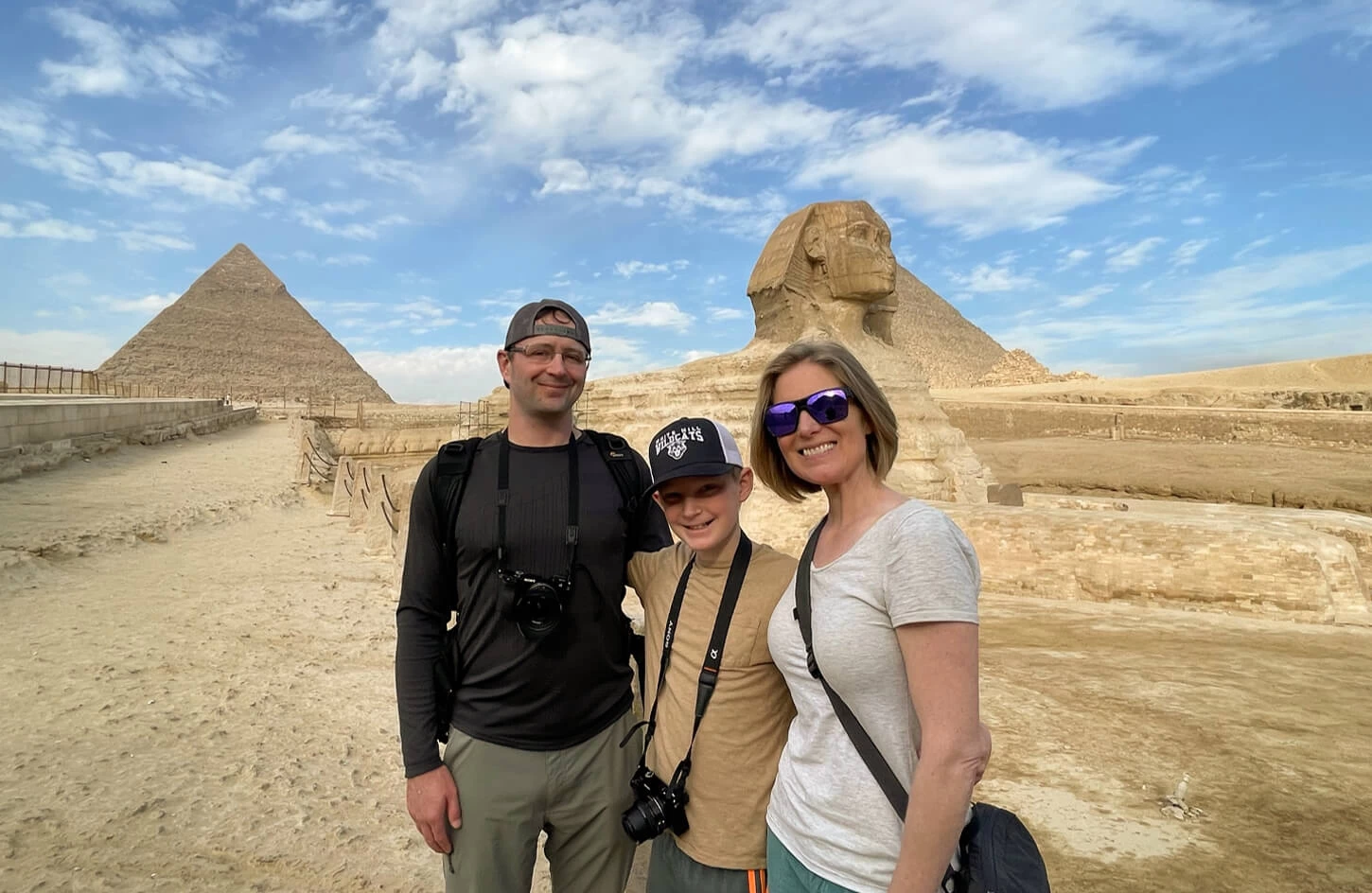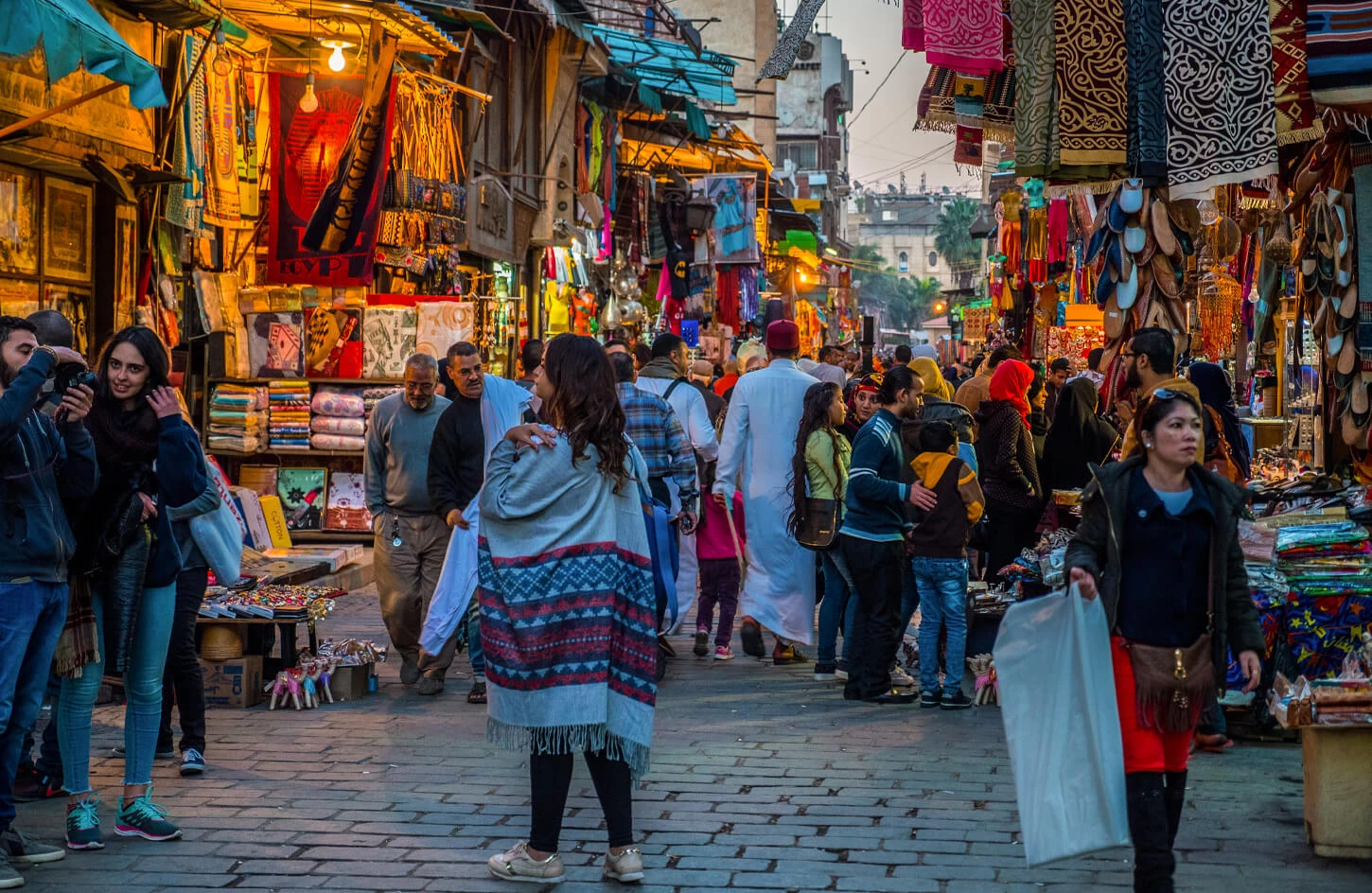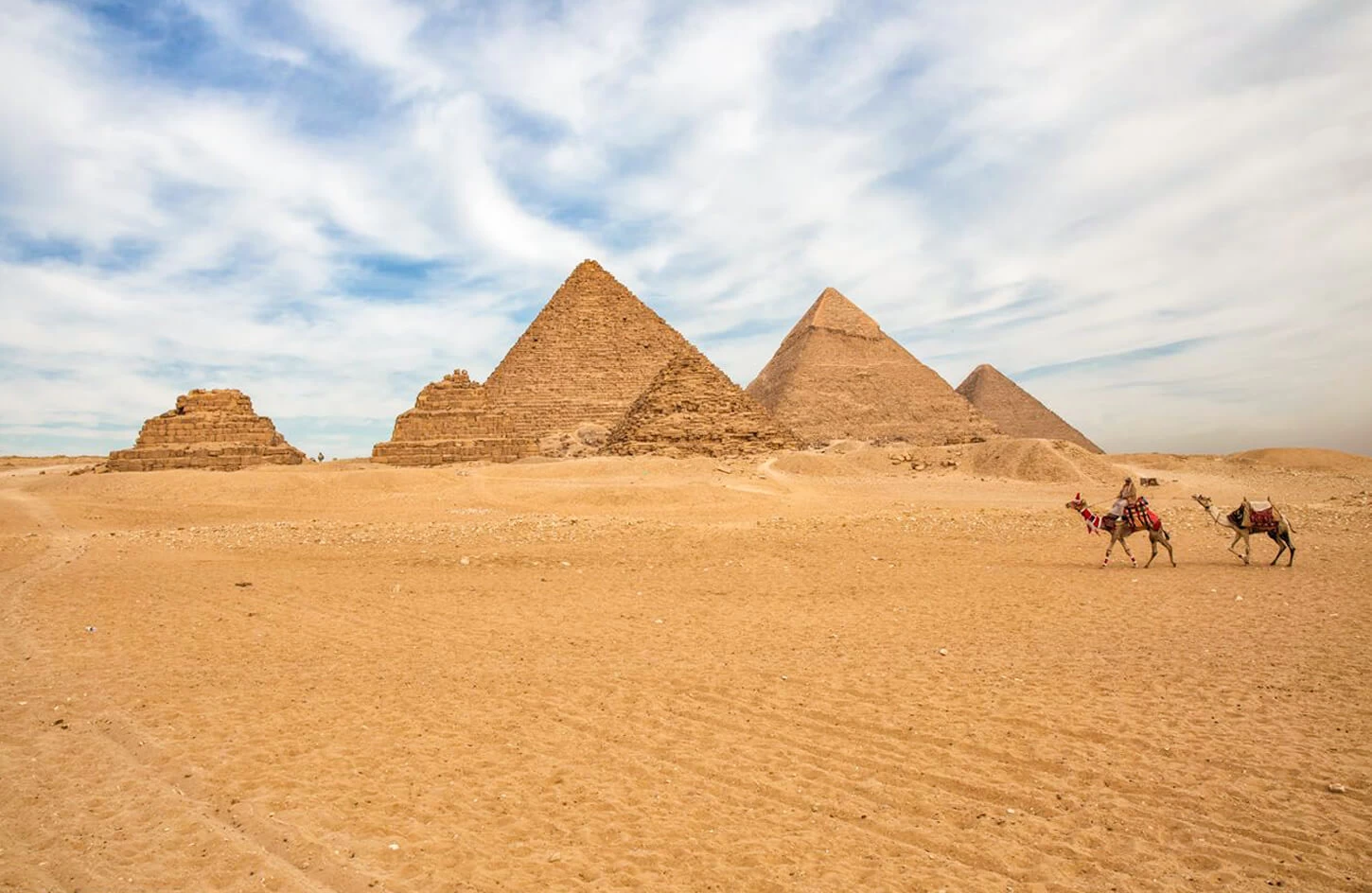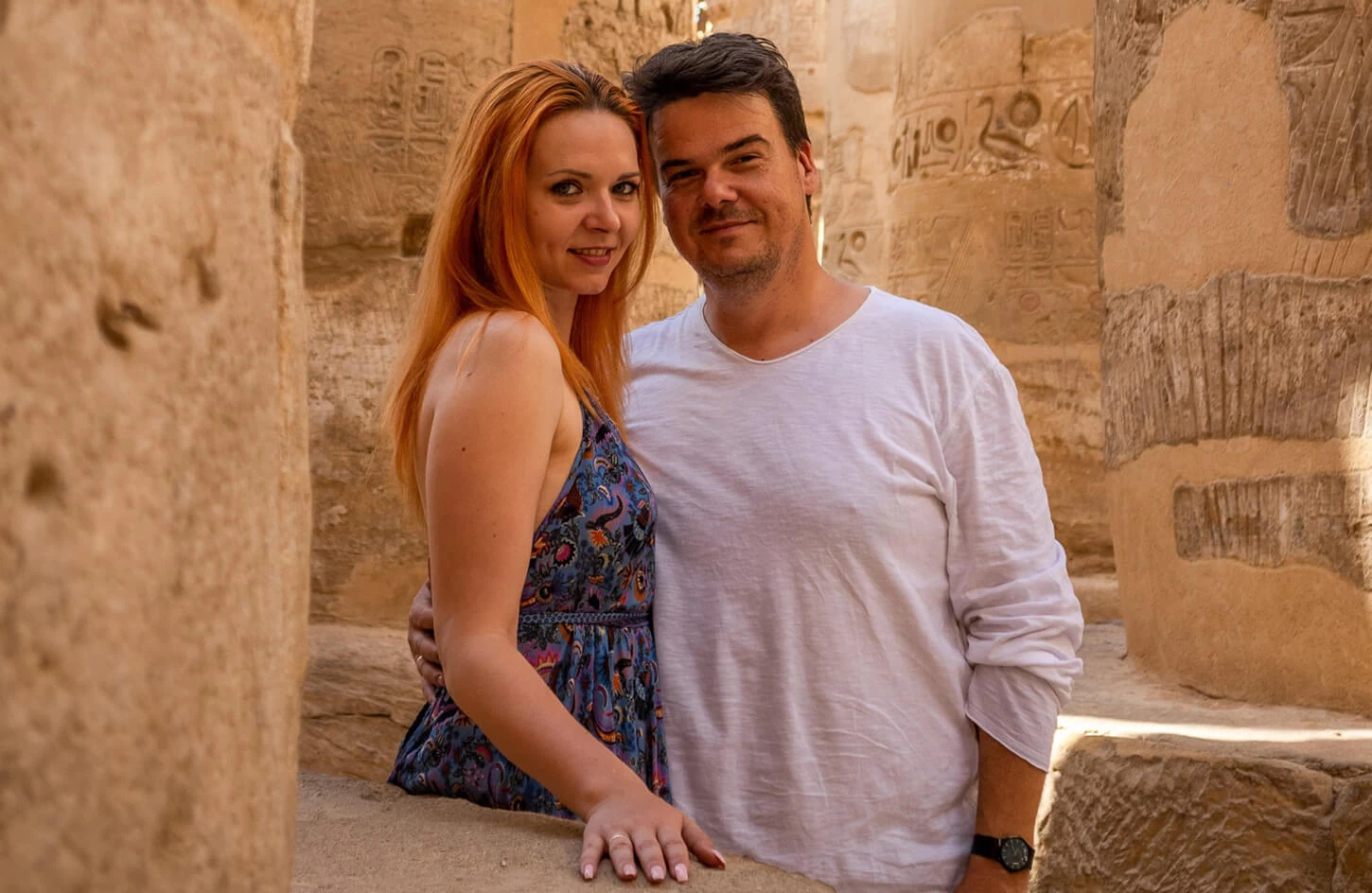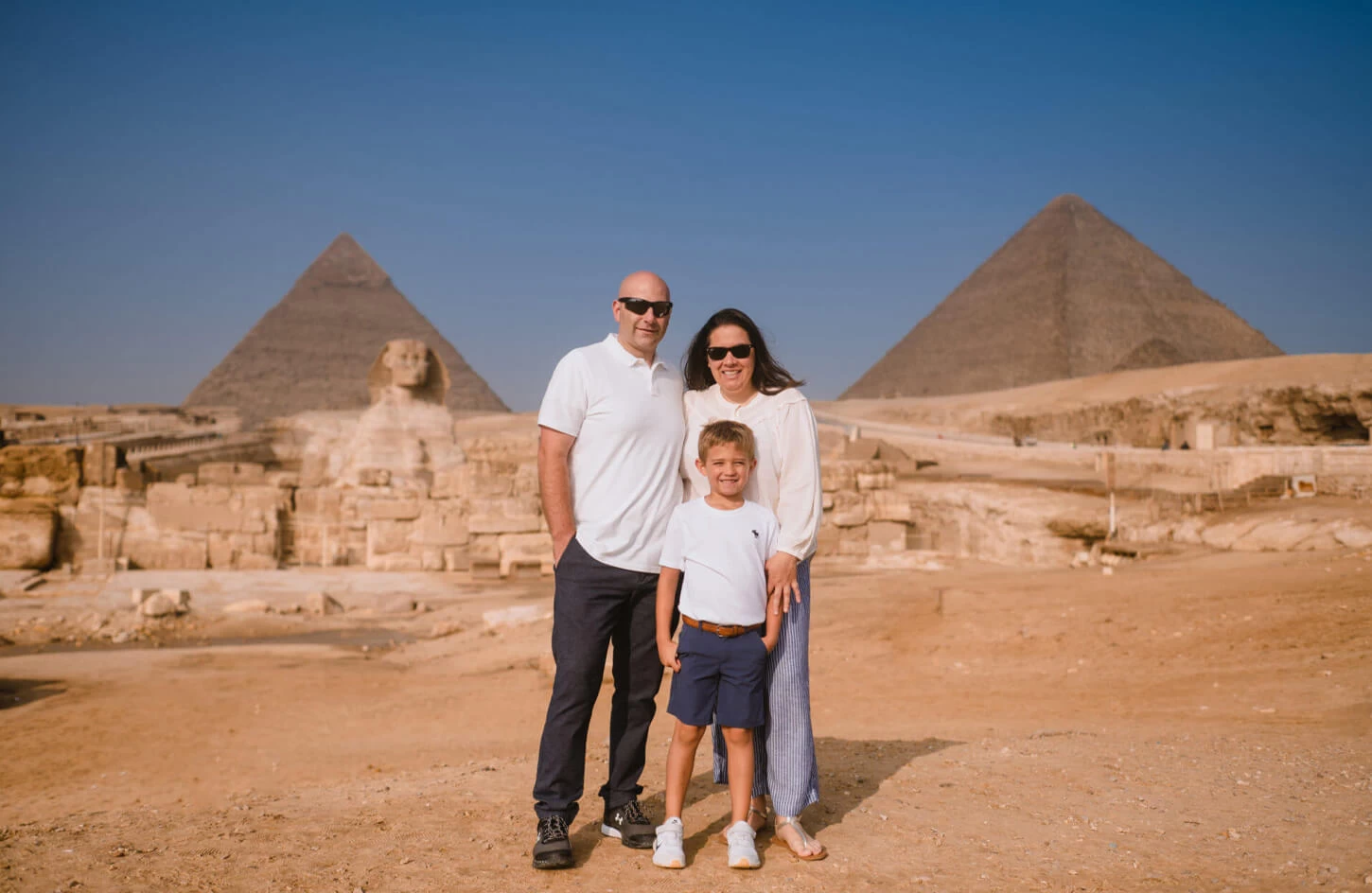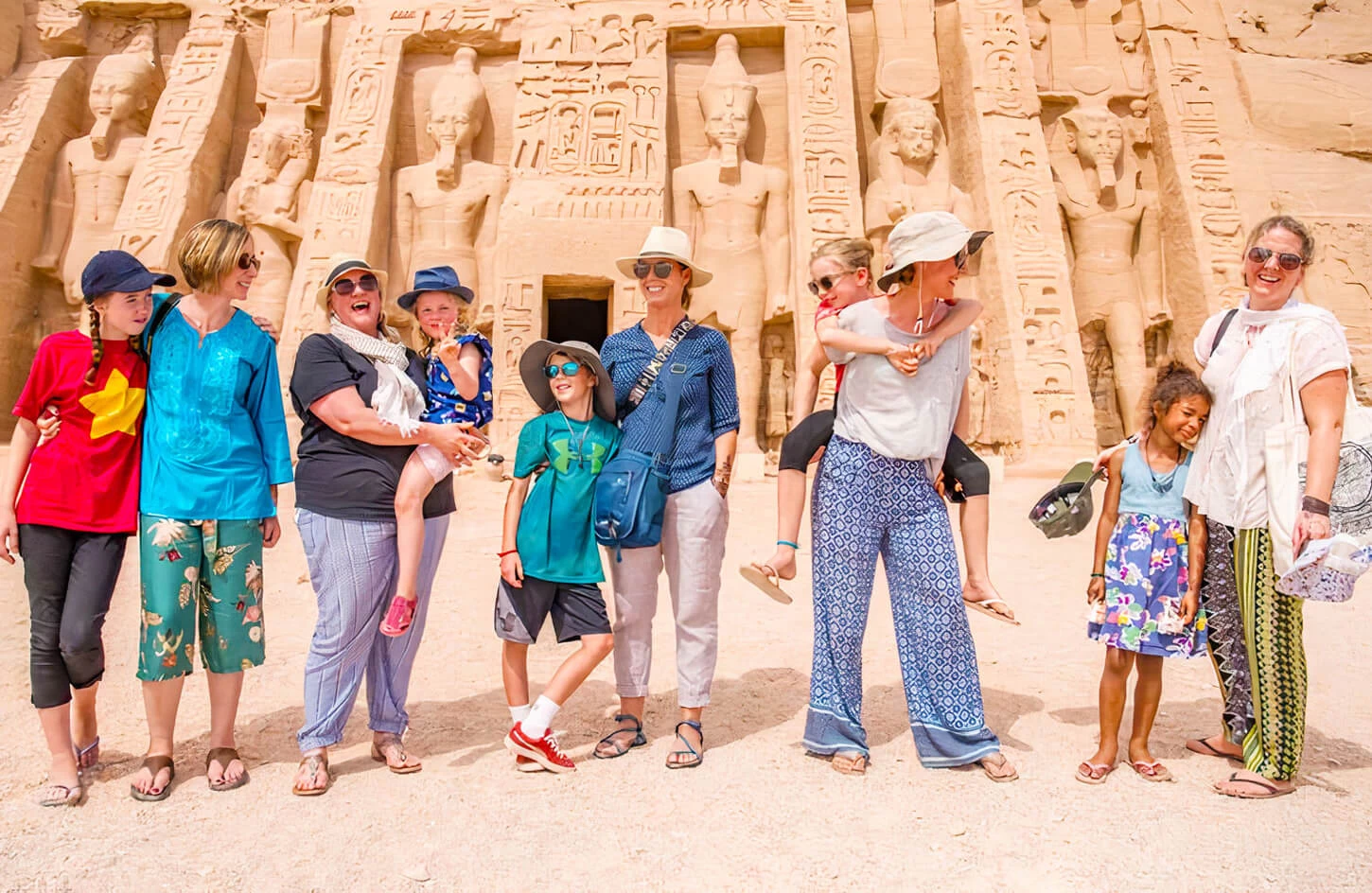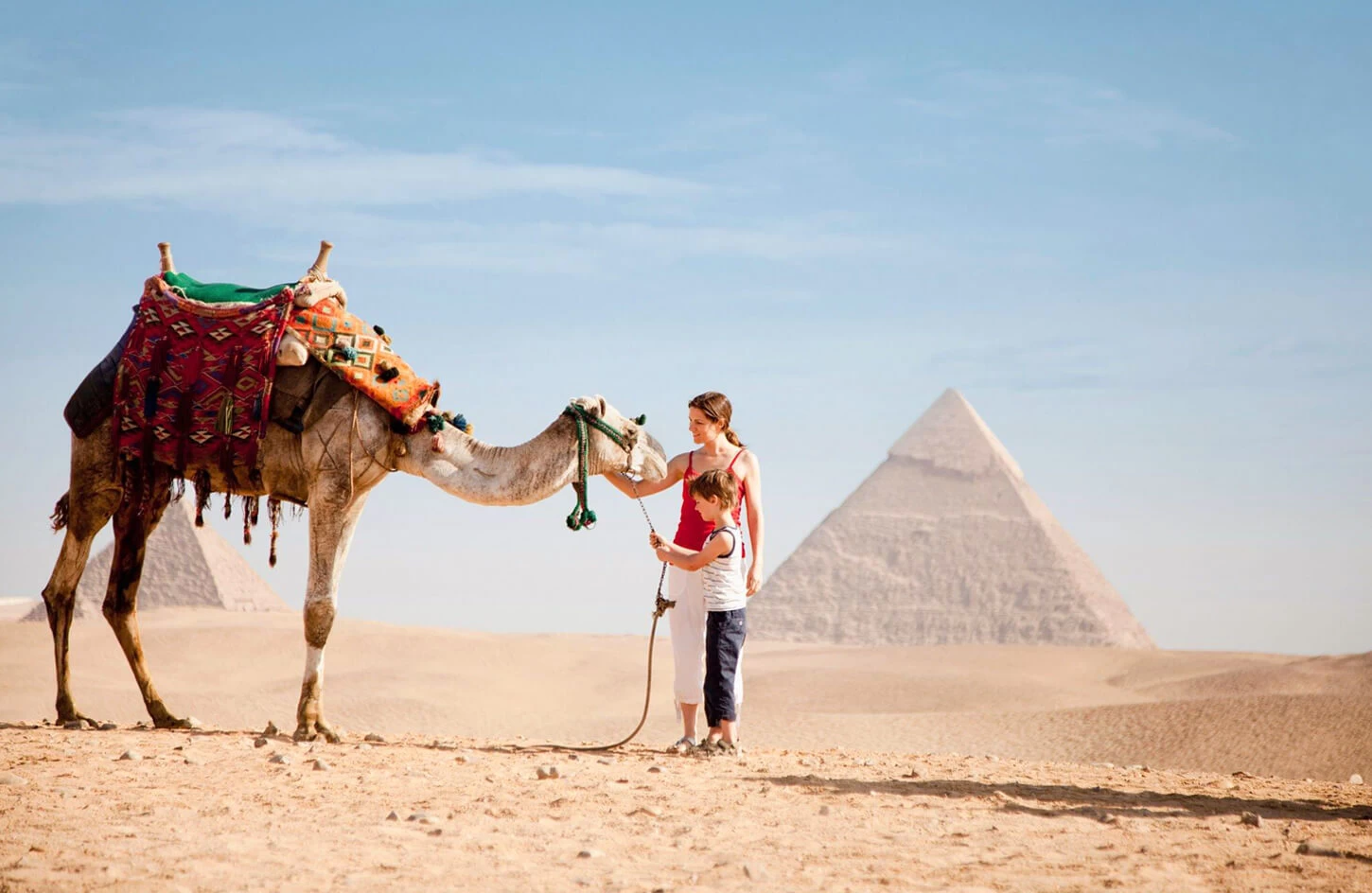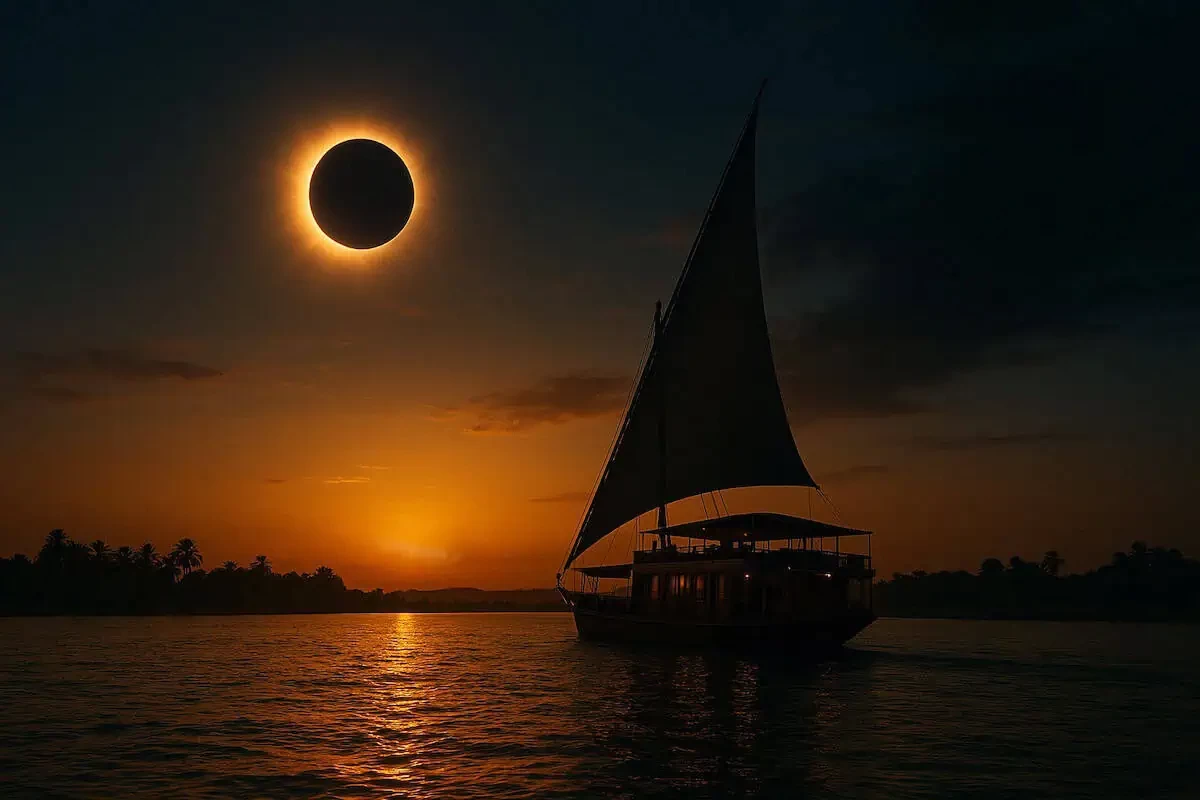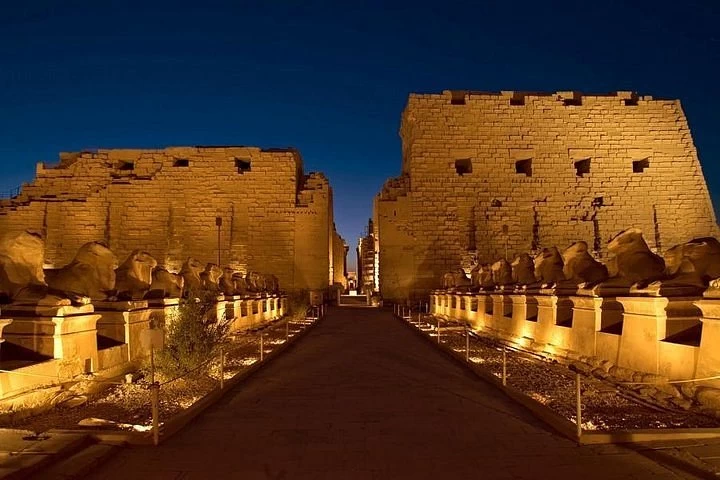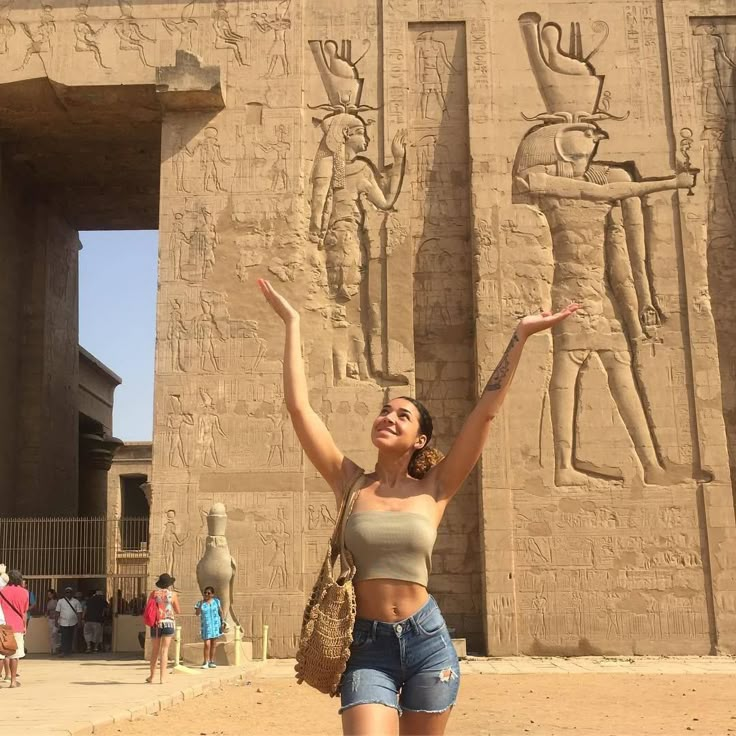Top attractions & activities you should visit in Giza
Imagine standing at the edge of the Giza Plateau. The sun casts golden rays over the iconic pyramids. These structures have stood for nearly 5,000 years. The air is filled with rich history and ancient stories. The Pyramids of Giza are not just tombs of pharaohs. They represent a civilization that has fascinated travelers for centuries. Planning your adventure in Giza? This guide will show you the top attractions you can visit and activities during Cairo adventure tours. Get ready to explore one of the world's most captivating destinations.
The Great Pyramid of Khufu - The oldest landmark in Giza
The Great Pyramid of Khufu is an ancient wonder-the oldest, most significant monument in Giza. Built around 2570 BCE, it once stood at 146.6 m tall. It is made of over 2.3 million limestone blocks, each with a weight of 2.5 to 15 tons. Extraordinary accuracy defines the construction of the pyramid. It is aligned with true north to within 4.4 cm error. This shows how advancing in construction techniques the ancient Egyptians are. The place is a tourist attraction in Giza; it has remained the only ancient wonder of the world for over 4,500 years. People come to see the massive size, engineering skills of the ancient Egyptians, and the monument itself.
This pyramidal structure had more than the tombs of Pharaoh Khufu. It was an expression of ancient beliefs concerning the afterlife. They did believe that the pharaoh needed his earthly possessions in the afterlife. The Great Pyramid of Khufu can be viewed by paying an amount of 160 Egyptian Pounds for entry to the Giza Plateau, then paying another 360 EGP to go inside the pyramid. It is better to buy tickets early so people won't have to wait in line.
Beware of unofficial guides who may offer ride services on horse or camel to visitors and ask for a fee for that service. The best time to visit the site is midday or afternoon during winter, avoiding the morning haze. In summary, the Great Pyramid of Khufu is another modern-day wonder of ancient wisdom. It captivates those who seek knowledge about Egypt's historical records. Viewing it firsthand creates a most amazing experience.
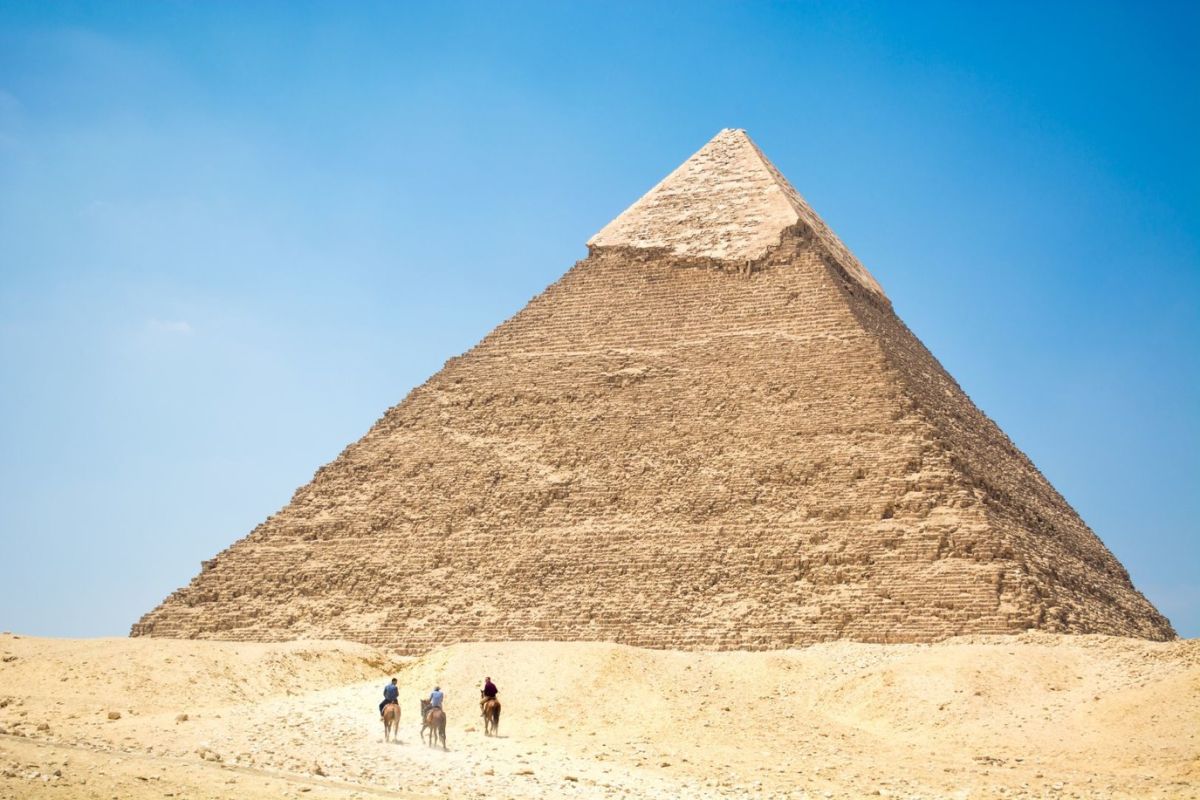
The Pyramid of Khafre - It's the second tallest pyramid
It was Pharaoh Khafre some time around 2520 BC who ordered the construction of the Pyramid of Khafre, a prime landmark at Giza. This is the second tallest pyramid: the height of the pyramid measures 136.4 meters (448 feet). Due to it is sited at a higher location on the Giza Plateau, the pyramid does indeed appear larger than the Great Pyramid of Khufu.
- Year Built: c. 2520 BC
- Height: 136.4 meters (448 feet)
- Most important distinguishing feature: Intact casing stones at the top
- Flowing towards: The Great Sphinx
Its beauty is what attracted so many visitors, and it is thus the first pyramid that one must see to understand ancient Egyptian architecture and culture. The sheer size of the structure has fascinated thousands of visitors, proving the skills and creativity of its builders.
The Pyramid of Menkaure
While the Pyramid of Menkaure is the smallest of the Giza pyramids, it is also one of great importance. Originally 66.5 m in height, the present height of the pyramid is only about 65 m. Constructed for the Pharaoh Menkaure in 2548 BC, it forms an important part of ancient Egyptian architectural practices. When you go to Egypt Tour, don't forget to visit the Pyramid of Menkaure. Smaller than the other pyramids, it still has its own unique features-a mark of its greatness.
The Pyramid of Menkaure is elegantly designed. There is a main pyramid and smaller pyramids for the queens of Menkaure. To the top, the pyramid allows you to have 203 steps. The pyramid has a square base of 108 m and consists of stone blocks weighing over 2 million blocks, each weighing about 2 tons.
The Great Sphinx of Giza - with a lion's body and a human head
The Great Sphinx at Giza is one of the marvelous monuments in Giza. It's a gigantic limestone statue measuring 73 meters long and 20 meters in height. It is believed to be of Pharaoh Khafre, having a lion's body and a human head. This monument is said to have been constructed around 2500 BC. The Sphinx is, in a sense, the guardian of the Giza Plateau, the cemetery of the pharaohs. It's near the Great Pyramids and, thus, becomes a highlight of the attraction. It is even accessible to the people throughout the year. Giza Plateaus opens from eight in the morning until four in the afternoon. Admission fee: EGP 200 for adults and EGP 100 for students. Guided tours start from EGP 500 to EGP 1500.
- Come during shoulder seasons: spring and autumn for a much better experience.
- It would take you about thirty minutes from the center of Cairo to reach the Giza Plateau.
- Consider public transport as a low-cost option to visit this region.
Many repairs have been carried out on the Sphinx, the latest being in 1931. However, the nose is missing. Various legends try to give an explanation for this. Some attribute its loss to Napoleon's soldiers while others to iconoclasts. It is an experience to see the Great Sphinx of Giza, and none can afford to miss it because of his interest in ancient history.
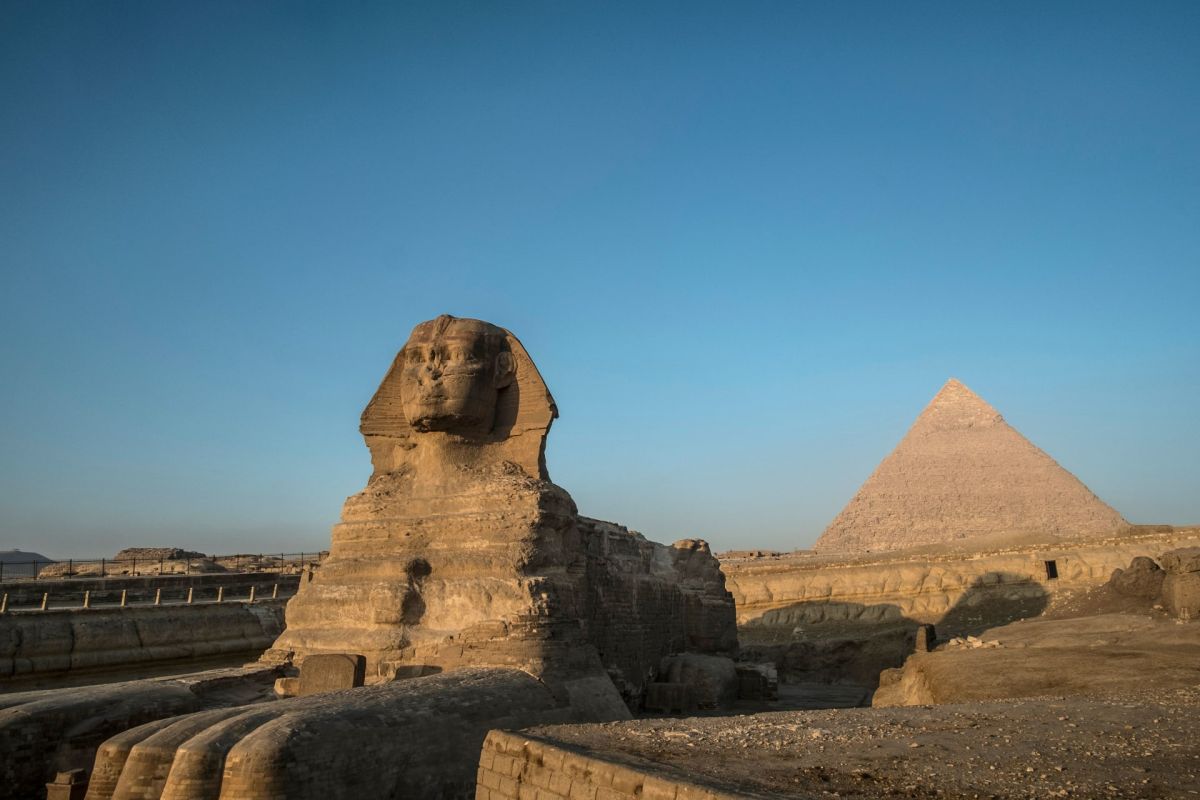
Wissa Wassef Art Centre - They use natural plants for dyes
Wissa Wassef Art Centre is a really alive place for Giza culture. It presents Egyptian art through the local arts in Giza. It is found in southern Giza, close by Saqqara, a very must see spot for its culture richness. Here, you would see how artisans weave beautiful tapestries. It takes around a month to intertwine just one square meter. This demonstrates how hardworking and skillful each craftsman is. Artisans at the Wissa Wassef Art Centre sketch, that makes each piece special in their own right and one-of-a-kind view from the artist. Dyed with natural plants, colors, and textures rich.
These tapestries are, but not art; they are the pride of everybody round the globe, shown in museums all over. Divided into two parts, there's one part which you can actually witness artisans at work and another one would be a museum and gallery where the art works can be bought. Starting at about $100 for a tapestry and around $10 for batik art, it's quite affordable in case you're wondering.
Street parking is easy with free tours, which allow one to enter well into the local arts in Giza.
- Artisan pays his time and quality of work.
- Batiks treated with wax and boiled actually form the fabric of batik art.
- A fairly big tapestry museum is stroller accessible, although the dirt paths exist.
- Further in the area is Adam Henein Museum, adding to the local culture.
Wissa Wassef Art Centre is dedicated to the keeping of traditional crafts. A visit here can be quite calm and educational. Going into that depth into culture in Giza makes the visit as informative as it is meaningful to local arts.
Giza Necropolis: An Overview
The Giza Necropolis is famed for the massive structures found therein and its past. It is a UNESCO World Heritage site. It showcases the Great Pyramid of Pharaoh Khufu and other pyramids. These Great pyramids concern the architecture and burial customs of ancient Egyptians. The necropolis illustrates the evolution of the pyramids and their beliefs about the afterlife. A visit to these tombs will inform you of their history. The entrance charge for general admission is 200 EGP (US$11), whereas the same for the Great Pyramid is 600 EGP (US$33). The site is open from 6 am to 10 pm daily, therefore providing good enough time to appreciate the site.
- It is said that 2.3 million limestone blocks weighing 2.5 tons each made up the Great Pyramid of Giza.
- Chephren's Pyramid looks far larger and more impressive due to its being set on a higher plateau.
- The valley temple associated with Khafre was where the mummification took place.
- The Great Sphinx was carved out of a single block of sandstone, a display of the ancients' artistic skills.
King Menkaure's pyramid is about 65m in height and made of a mixture of white granite and red granite and green limestone also known from the archaic times. Reaching Giza Necropolis is easy by bus, taxi, or conducted tours. Taxis charge around 50-60 EGP. For some more entertainment, you could ride a camel for 200 EGP or take a boat ride along the Nile for 250 EGP. Generally, the necropolis is considered safe and very hospitable to travelers. A Giza travel guide will help you unlock the secrets of the ancient sites. It promises to be an unforgettable journey back in time.
Things to do in Giza Egypt
Giza is the best place to visit on your Egypt tour. If there is a must, it is the pyramids. The Great Pyramid charges 400 EGP for entry. The other pyramids, along with the Solar Boat Museum, charge 100 EGP each.
Read up on guided service tours that will provide further information about some of the sights around Giza, such as the Giza Necropolis.
- Think about going for camel rides that offer a more unique perspective on the monuments.
- Shop in neighborhood markets for authentic crafts and souvenirs.
The travel tips for Giza will set you up for a more enjoyable experience. Dine at El Dar Darak or The Blue Restaurant & Grill. Meals cost 7-14€. Accommodations are offered at Pyramid Edge Hotel or Cleopatra Pyramids View for 65€ and 57€ per night, breakfast included.
Plan the trip well to cover everything. Giza has lots to do for all kinds of travelers.
Khafre’s Valley Temple
Khafre's Valley Temple is located eastward of the pyramid of Chefren in the Pyramids of Giza Complex. It is considered one of the prominent features of ancient Egyptian architecture. Built for King Khafre, who commissioned the second largest pyramid in Giza, it incorporated this popular temple in the 4th dynasty. It served mainly for cleansing the body of Khafre before burial and was a significant aspect of the mummification practices.
This temple has its dimensions as follows: it is square with each side measuring 482 feet. It was outfitted with a special plan including:
- Entrance hall opening to an open courtyard
- Thick pillars which support the ceiling
- Niches and storerooms for miscellaneous purposes
- An inner sanctuary complete with stelae and a false door
It was made from local limestone with finely Tura limestone and pink granite ashlars. This proved to be the skill of ancient Egyptians. Found in the 19th century, it exists as the best-preserved Valley Temple of Egypt. In the 1860s, archaeologists came across twelve statues of Khafre. Some were taken to other countries by conquering rulers.
Khafre's Valley Temple is the ancient Egyptians' hallmark. It is something that excites historians who follow ancient Egyptian culture and temples of Giza. The current remains give a glimpse into their rituals and beliefs. It marks the Fourth Dynasty as an important period in Egypt's history.

Menkaure's Valley Temple
Menkaure's Valley Temple lies to the east of the Pyramid of Menkaure. It shows the beauty of buildings of ancient Egyptian origin. Though damaged, this temple is a key place in Giza, witnessing the time of Menkaure.
The carvings of the temple are such that it was originally used for worship. The statues of Menkaure aided in our understanding of the pyramids and temples in Giza. This temple allows the visitor to see the great skill and effort put into its construction.
- Explore its finely carved scenes depicting the life of the pharaoh.
- Admire its architecture, which attests to the site's religious significance!
- Learn more about the findings that bear witness to the temple's past.
A visit to this temple would undoubtedly enhance one's trip to the Giza Necropolis. It is one of the world's most important places. Menkaure's Valley Temple testifies to the advanced skills of the ancient Egyptians and their enduring impact.
Queens' Pyramids
You'll find the Queens' Pyramids to the South of the Great Pyramid of Khufu. They may be smaller, but just as fascinating. Each pyramid is approximately 20 meters in height. Their presence examines the status and importance of queens in ancient Egypt.
These are not huge pyramids: they obscure the big secrets of Giza and royal life. They honored the queens as they should have been, but nothing compared to those grandiose constructions for kings.
- Each pyramid testifies to the architectural art and skill of the Old Kingdom.
- Their diminutive size demonstrates the gender roles of ancient times.
- You also view the designs and history through the Queens' Pyramids.
Visiting the Queens' Pyramids is equally a lesson in royal history and that of past Giza. Most of all, these sacred shrines testify to the important role women played in ancient Egypt, leaving a legacy.
Solar Barque Pits
-These pits, located to the east of the Great Pyramid of Khufu, are for solar barques. They offer a glimpse into the ancient concepts of burial practices in Egypt. The pits were for ceremonial boats designed to assist the pharaoh in the journey into the afterlife.
The Egyptians took care to build such pits. It reflects their respect for such a journey-the journey from one living world to the next. In 1954, the world-famous Khufu Ship was excavated. It is believed to be made from cedar wood around 2500 B.C. The ship was 43.6 meters long and 5.9 meters wide.
It took fourteen years to restore the ship. Chief restorer Ahmed Youssef Moustafa did this amazing work. These solar barque pits were important to Giza tourism, showing how ancient Egyptian culture was expressed in detail. Khufu's ship, the largest of fourteen royal vessels discovered, is proof of the skill of the period. A funerary barge or for royal pilgrimages is presumably its use.
You can see the ship up close by visiting the nearby Khufu Ship Museum. Remember, this requires a separate ticket and it is not included in the regular Giza Plateau ticket.
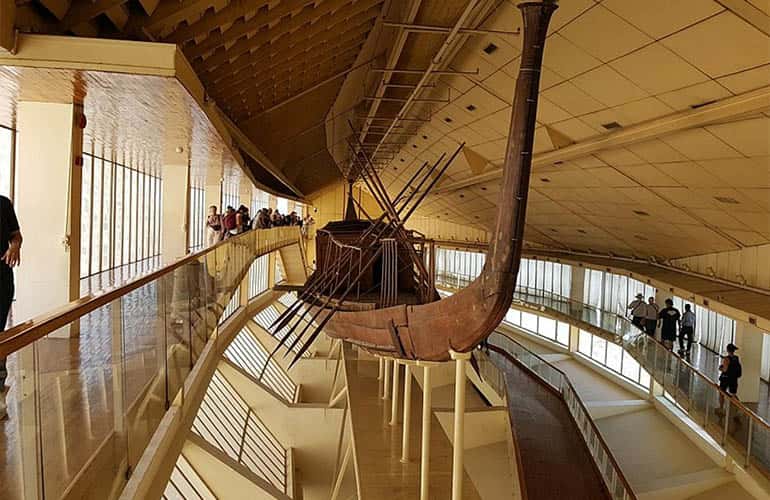
Giza is a window into the ancient world of Egypt. It reveals how rich the culture of ancient times can be.. Many things await you in Giza. It is a good idea to book through Egypt Day Trips, as this ensures that you get to see every major important place and site, leaving nothing for you to miss. Gorgeous experiences await you in Giza. The magic of this timeless place will surprise you!
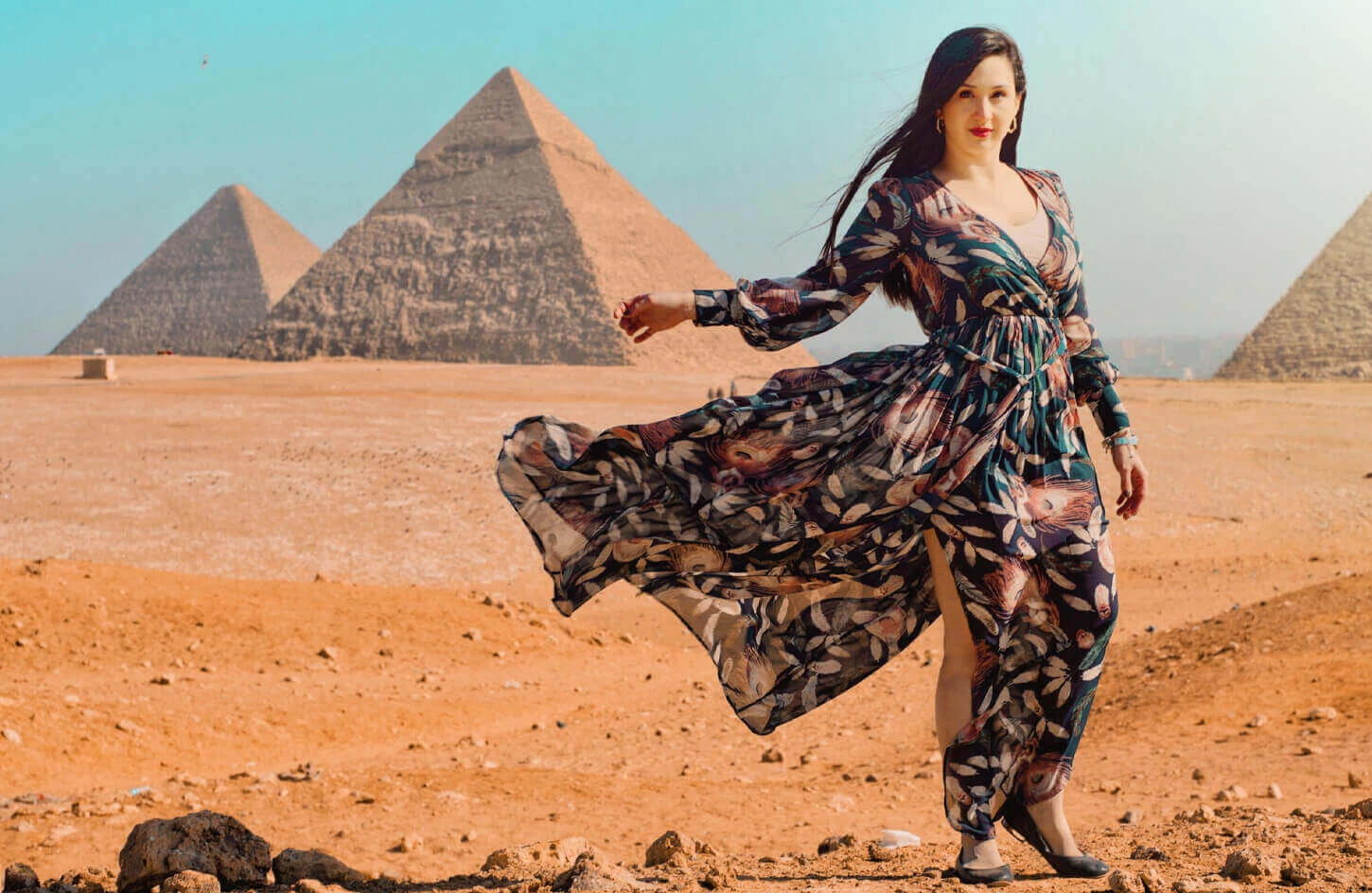
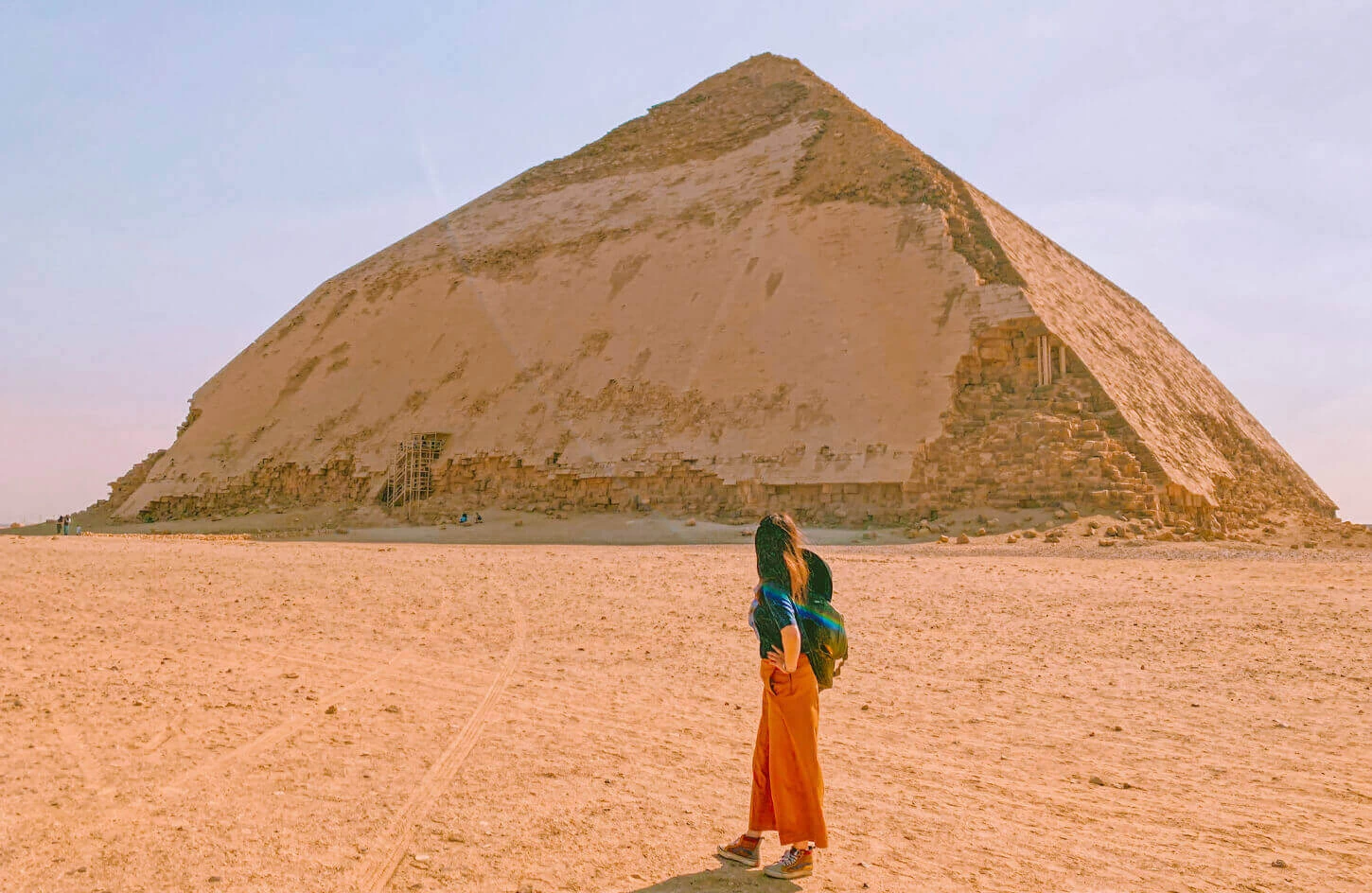
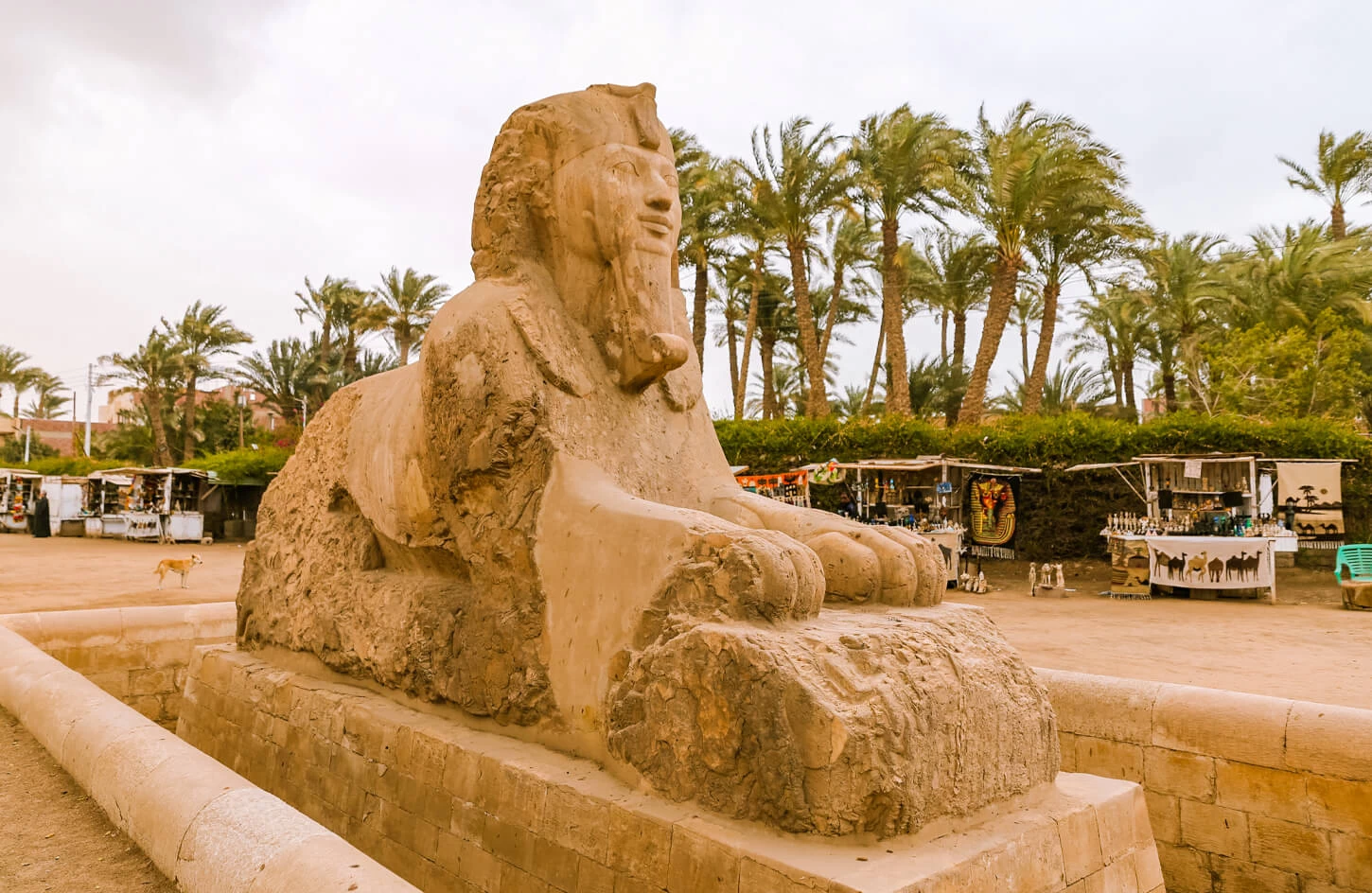
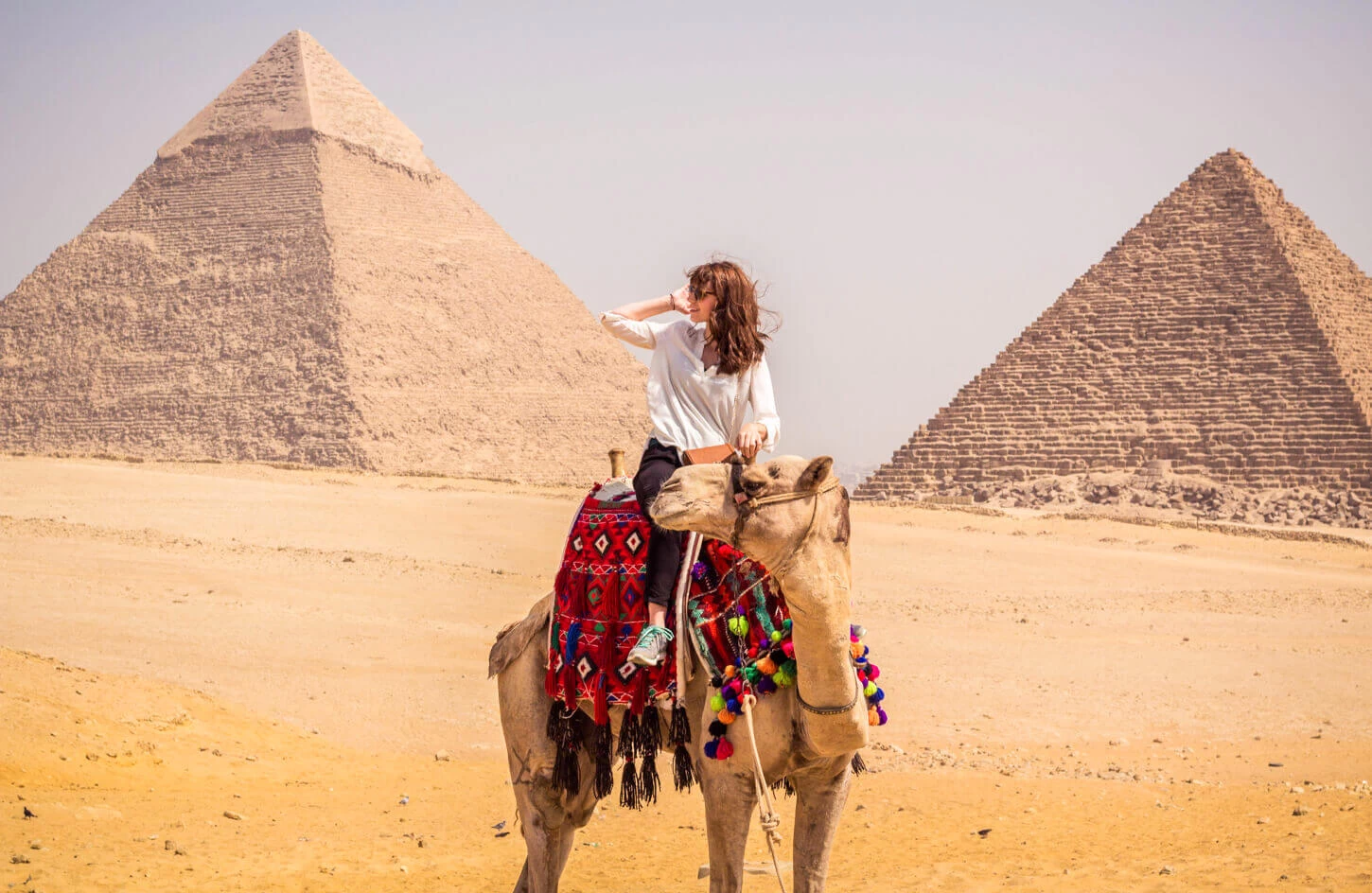
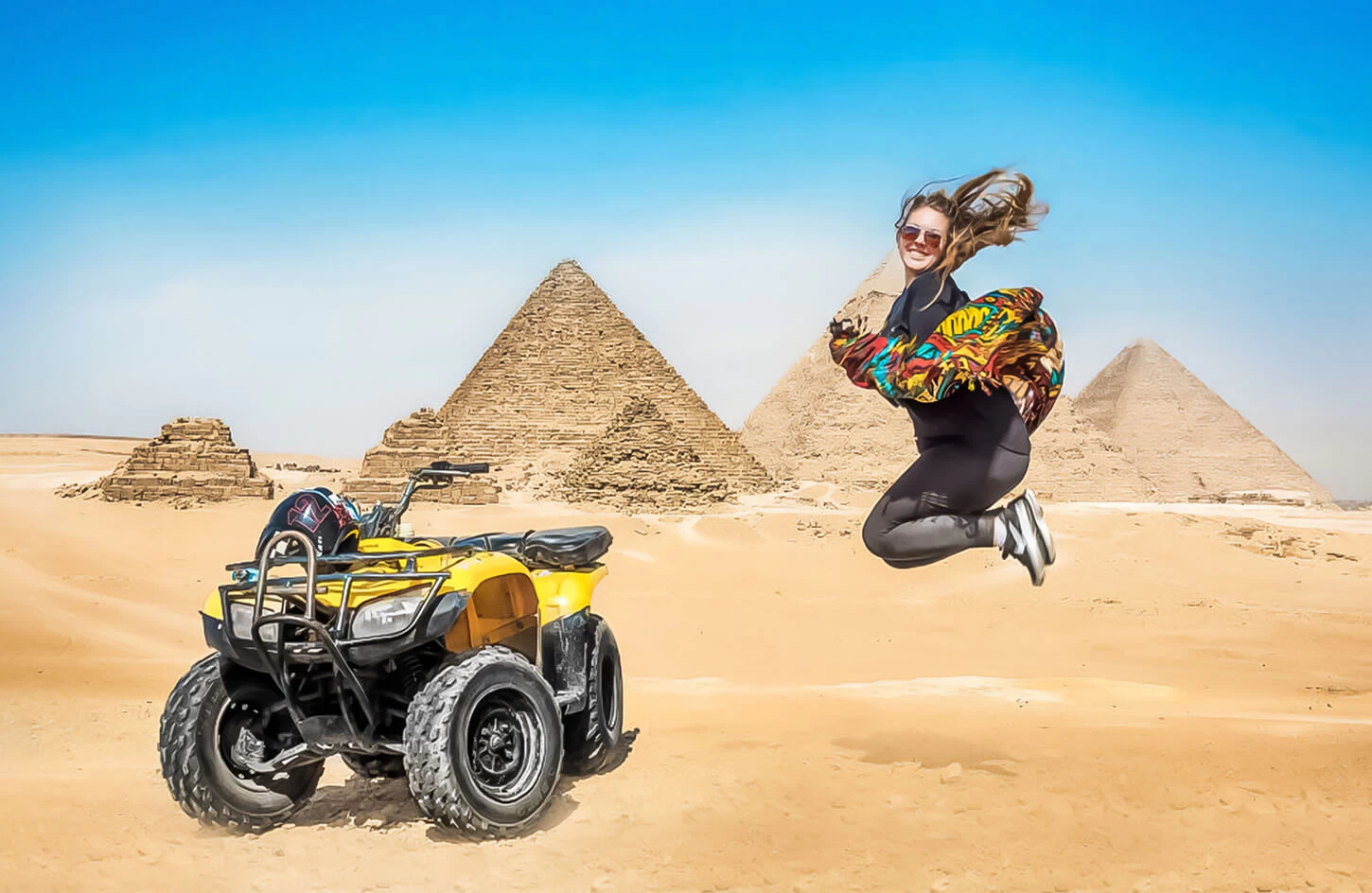

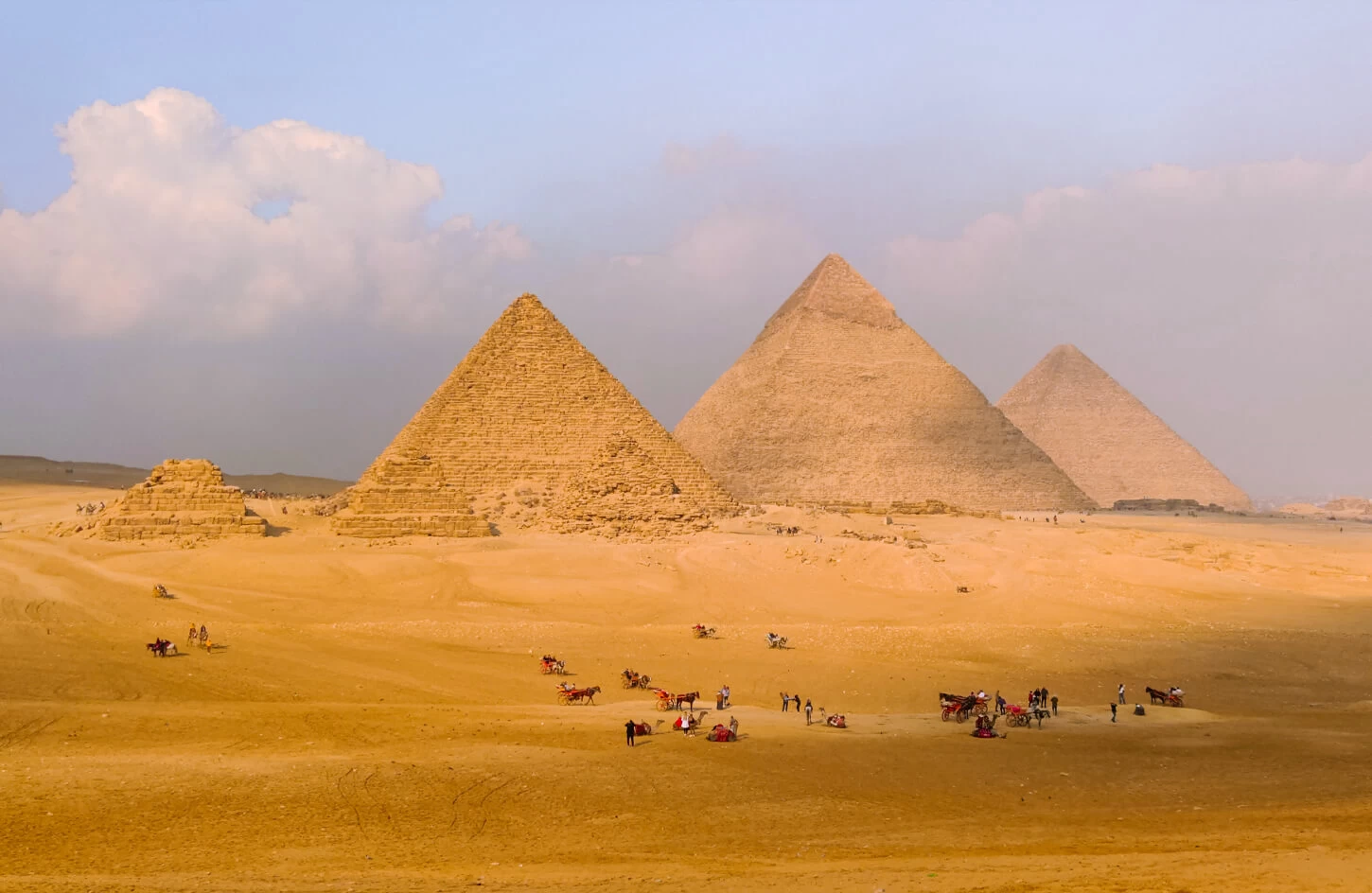

-webp.webp)
